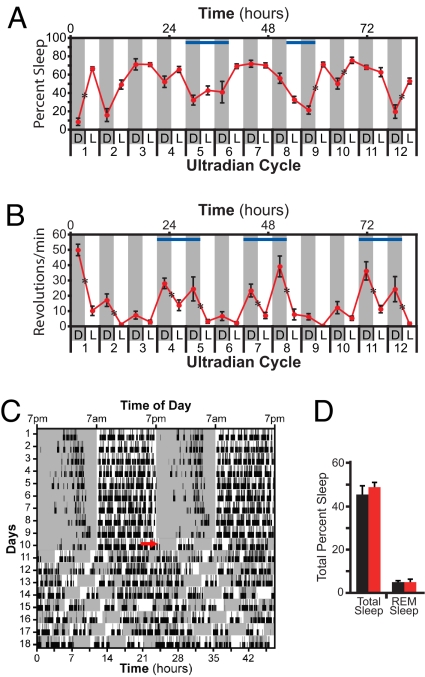Fig. 4.
Chronic light pulses repeatedly inhibit wheel-running activity but are not able to consistently induce sleep. (A and B) WT mice housed under 3.5 h/3.5 h LD ultradian cycles (light, white background; dark, gray background) reveal that light does not consistently induce sleep (A) (n = 4) but does consistently inhibit wheel running activity measured in a second group of animals (B) (n = 10). Lower x axis indicates cycle number and lighting condition. Upper axis depicts hours from the start of cycle 1. Blue bars indicate approximate region of wake maintenance zones in A and phases where the circadian drive to be active is high in B. (C) A representative double plotted diagram of sleep activity for one mouse in 12 h/12 h LD (circadian, d 1–10) and ultradian (d 11–18) paradigms (white background, light; gray background, darkness). Black tick marks represent sleep, and REM sleep is denoted by higher ticks. Red arrow shows the start of the first ultradian cycle. (D) Levels of total sleep and REM sleep are similar between 12/12 LD (black) and ultradian (red) light cycles (n = 3). *, P < 0.05.

